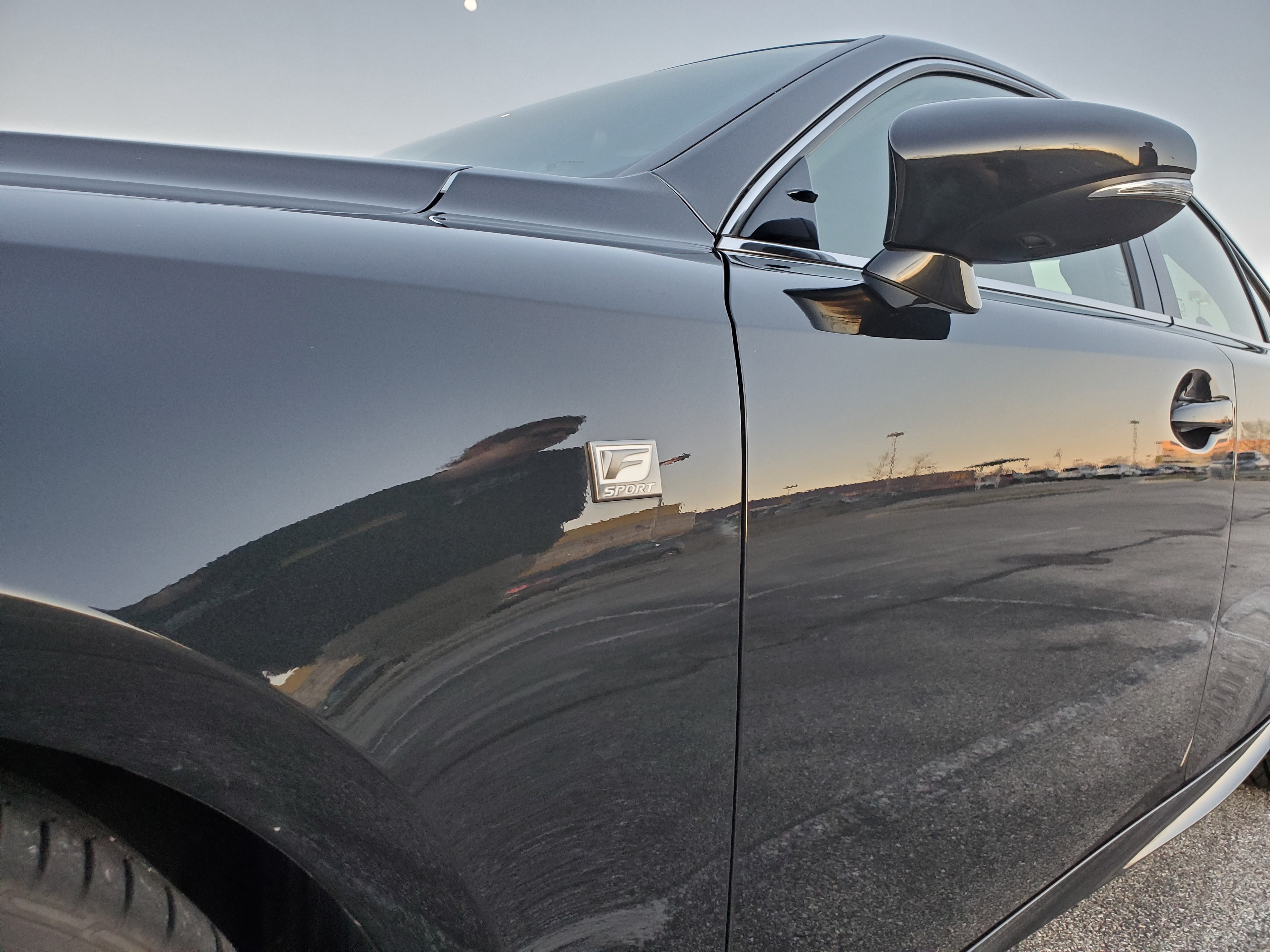
What is it?
The Lexus IS, Lexus' "entry level" rear wheel drive sedan, cannot escape comparisons to the BMW 3 series. No automotive writer worth their salt would dare ignore the 3 Series when talking about the IS. The 3 series has earned itself a reputation as the canonical One True Sports Sedan, against which all else is contextualized. Since it debuted around the turn of the century, the IS has been analyzed entirely in opposition to the "German sports sedans," in a supposed David-and-Goliath struggle. Considering the engineering and economic might behind Toyota, this isn't exactly an apt comparison: After all, Toyota has pioneered developments in suspension and transmission technologies for decades. Perhaps it's time to judge cars like the Lexus IS on their own merits.
The IS rides on a rear-wheel drive architecture (arguably already setting it ahead of Acura's offerings in the compact/midsize sport sedan segment), and will make anywhere from 178 to over 300 horsepower depending on options, with fuel economy also varying between 44 and 21 miles per gallon, depending on powertrain choice. At the economy-oriented end, performance is commensurate with other midsize sedans, and the 311 horsepower 3.5L V6 puts the 350 trim in with the mid-tier sport sedan pack, measuring up to cars like the Buick Regal GS, the Nissan Maxima, and the 3.6L Chevrolet Impala.
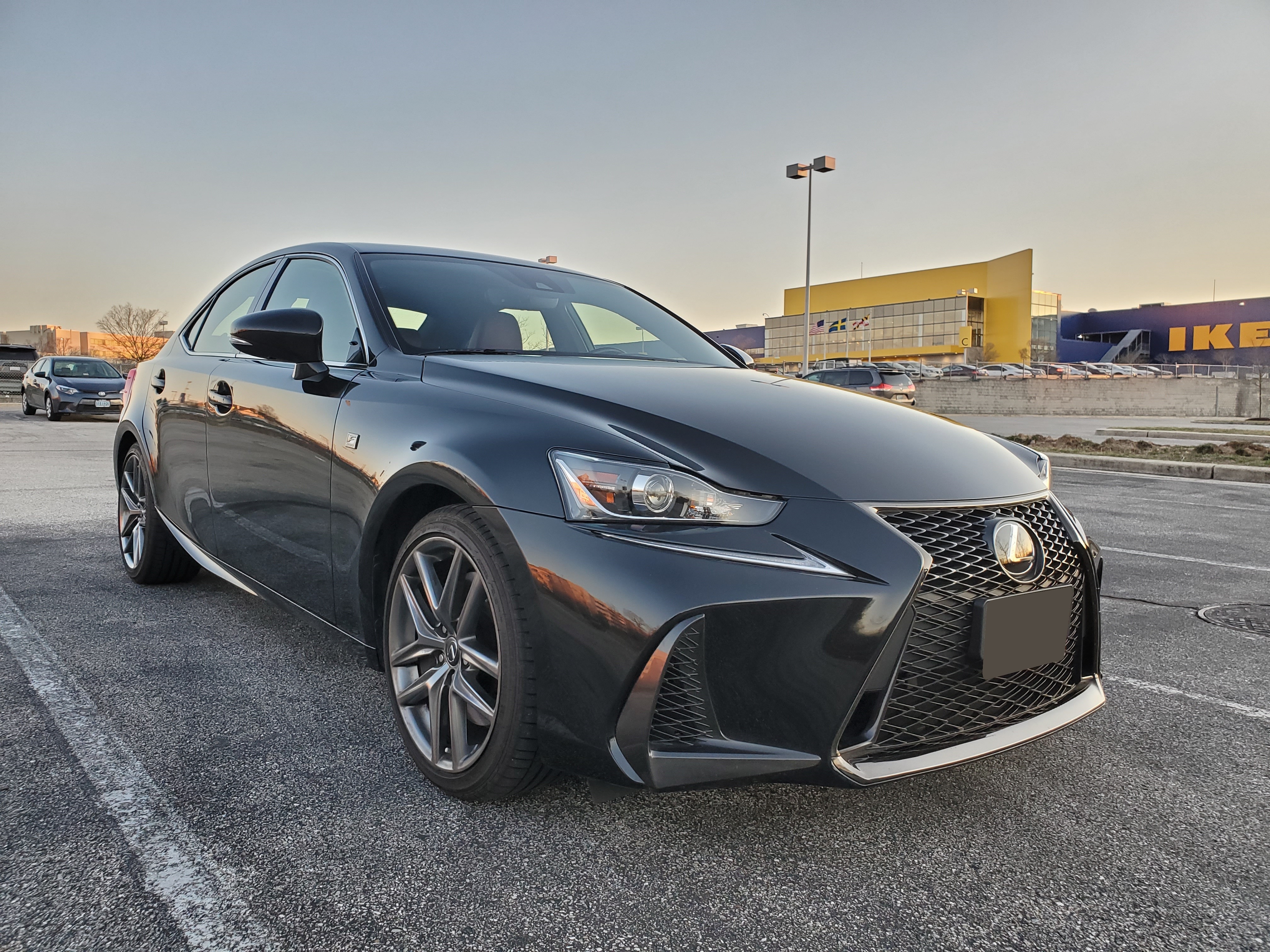
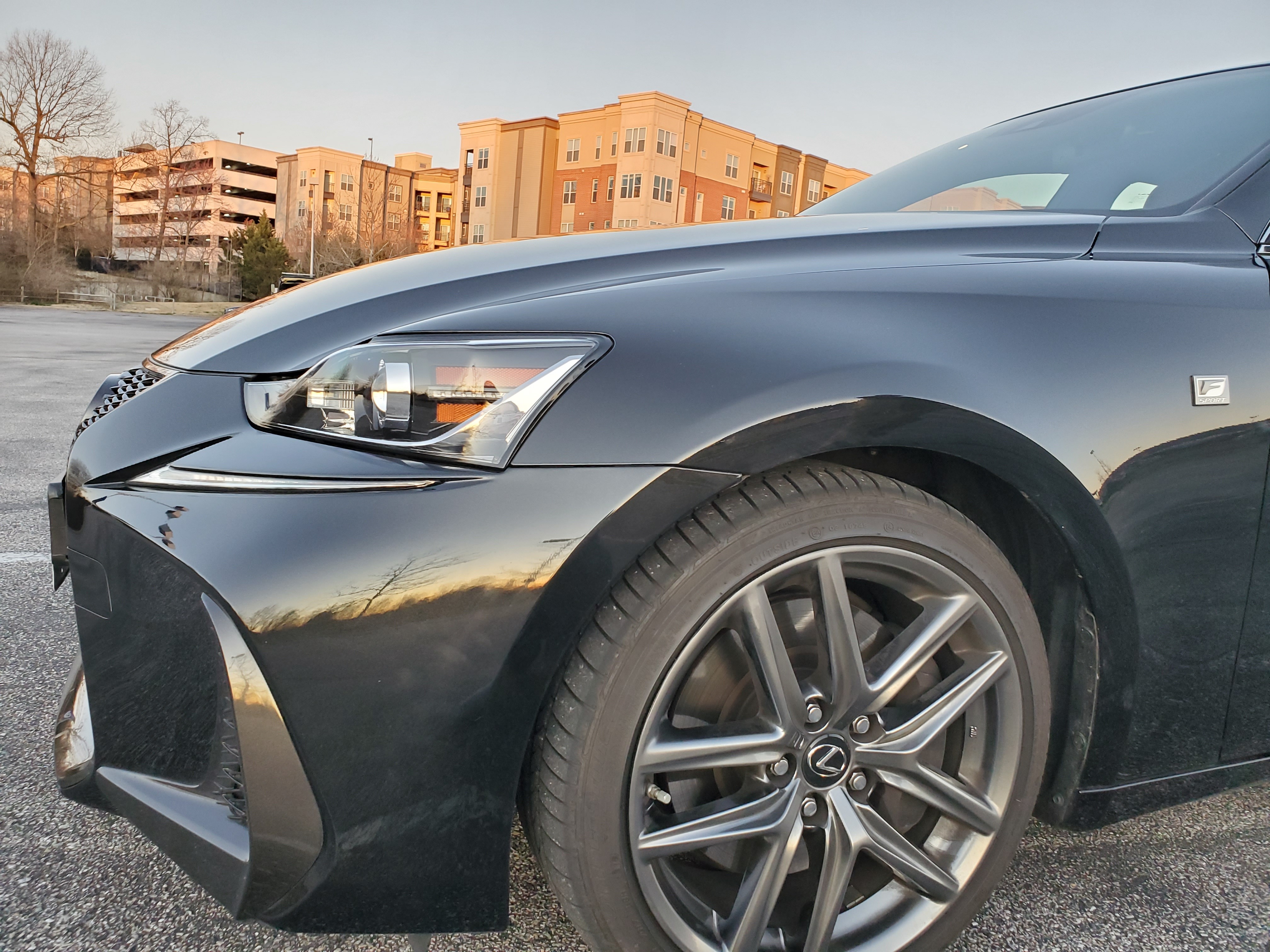
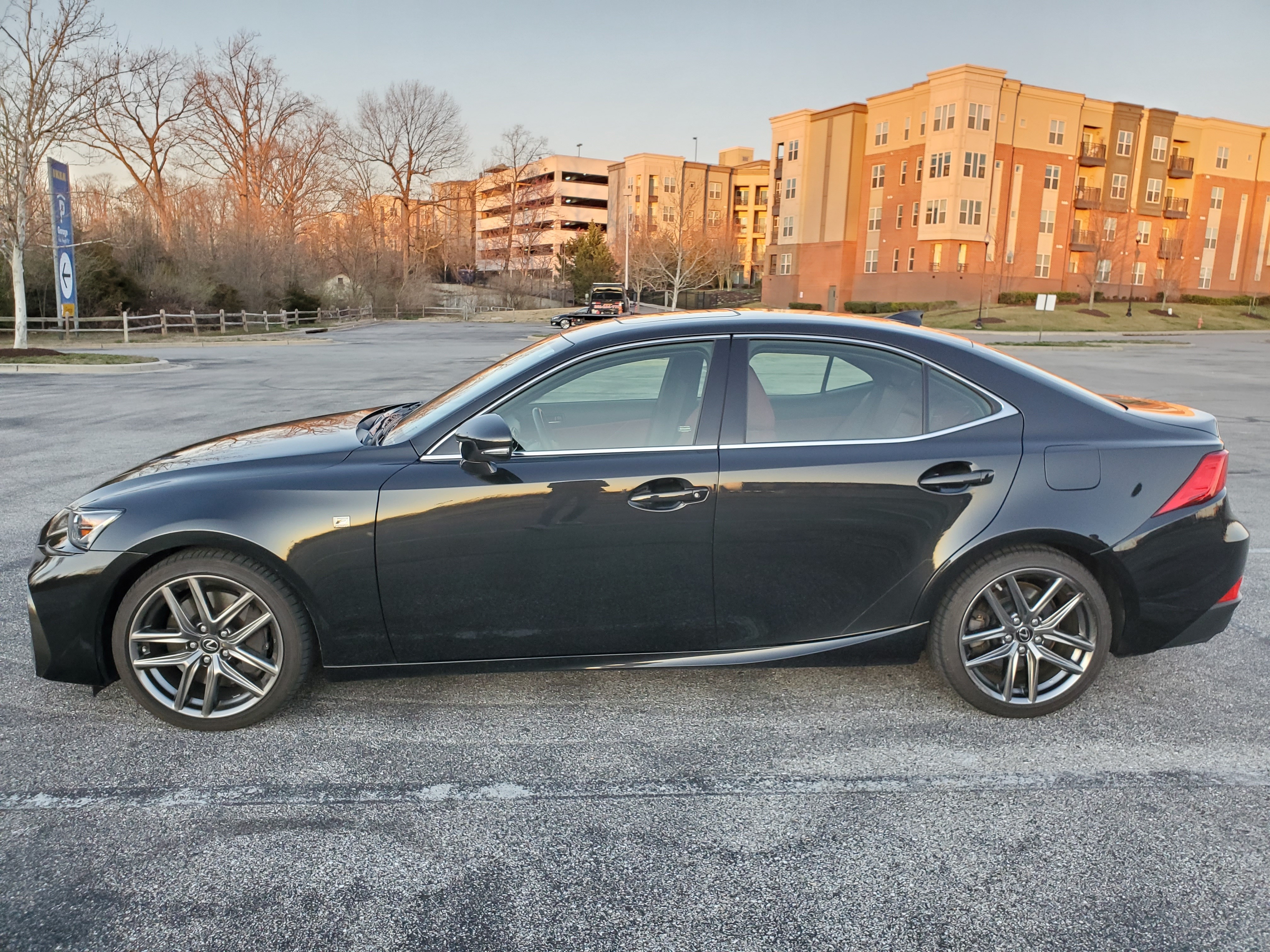
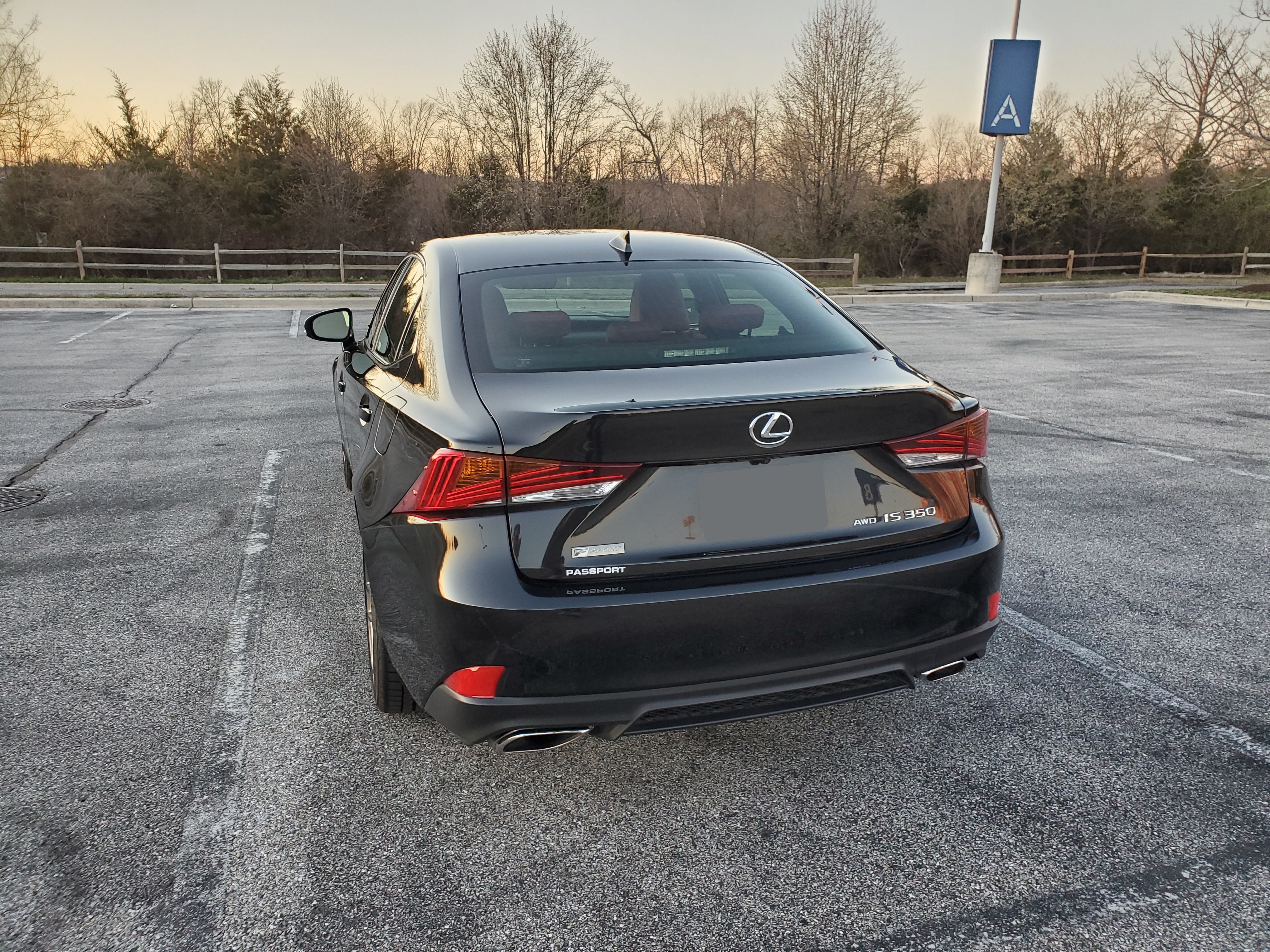
Unlike many of its competitors, the IS suffers a space penalty from its powertrain layout, and the cabin feels small compared to the overall size of the car. While it stacks up well numerically (The IS 350 has a quoted passenger volume of 101 cu ft, compared to the Maxima's 98 cu ft), the rear seat area feels cramped, with limited legroom if either of the front seats are occupied by someone over 5'9". The IS's trunk space is also limited, but considering the presence of a differential directly beneath the trunk, this is unavoidable in compact and midsize rear wheel drive cars, with full-size cars like the Dodge Charger having the room available for a larger trunk. At this trim level, the interior is plush and wekl-fitted, and all of the seats are comfortable enough for both extended road trips and a daily commute. Practicality for a one or two person use case is just fine, and as with many cars that are less than full size, a full 5 occupants would be very cramped indeed.
Nobody buys these things for their practicality though. With limited back seat space and plenty of luxury quality-of-life features, the IS immediately presents itself as a compact grand tourer, where the back seat is really a backup trunk. The front of the cabin, of course, is where the action is. Lexus' interior designers played it by the book here, and the 2017 IS has a front cabin that emulates the severe, minimalist approach taken by many modern luxury car designers. The center console, while busy, isn't cluttered, and isn't totally wrapped around the driver, allowing the passenger (or navigator) to easily use the infotainment systems without reaching around stylized buttresses or padding. The IS includes all the modern conveniences, like a two-zone climate control system, heated and ventilated seats, and a sophisticated infotainment system. None of this is particularly surprising for a car that retails for more than $40,000, and Lexus would be universally jeered if that had deliberately omitted any of these quality-of-life features. Instead, now that these luxury features are not only stylish, but considered mandatory by the automotive press, they are only able to stand out through industrial design and UI/UX design. When everybody has heated and ventilated seats as well as lane departure warning, nobody stands out.
Lexus made some clever moves for the interior design, especially in the center console. Instead of being a hard-to-reach touchscreen that requires the driver to take their eyes off the road, or requires the passenger to lean forwards and reach across vast gulfs of space to interact with the menus, thereby blocking the driver's view of the offside mirror, Lexus designed a joystick-esque touch control, a sliding touchpad not unlike the joystick of the Nintendo 3DS gaming console. One's hand closes around this touch controller easily, and navigating the menus on the bright, sharp screen is straightforward and instinctive. The joystick really comes into its own in the map utility, where directional buttons for moving the map window, or repeatedly tapping on points of interest with one's finger get old fast. The temperature controls for the HVAC system are similarly instinctive, with both adjustment buttons and a huge slider, which enables one to simply swipe up or down to change the temperature, rather than using a dial to adjust by one-degree increments. The IS generally has a good focus on tactile UI rather than touchscreen-based controls, which is a welcome change from a design landscape that is increasingly dominated by huge dashboard tablet screens that hog space, power, and driver attention. While touchscreens have almost become cheaper to build than buttons, they are ultimately a downgrade in actual user interaction, and good tactile control design far outperforms good tablet design. Tesla would do well to take a few notes from the IS.
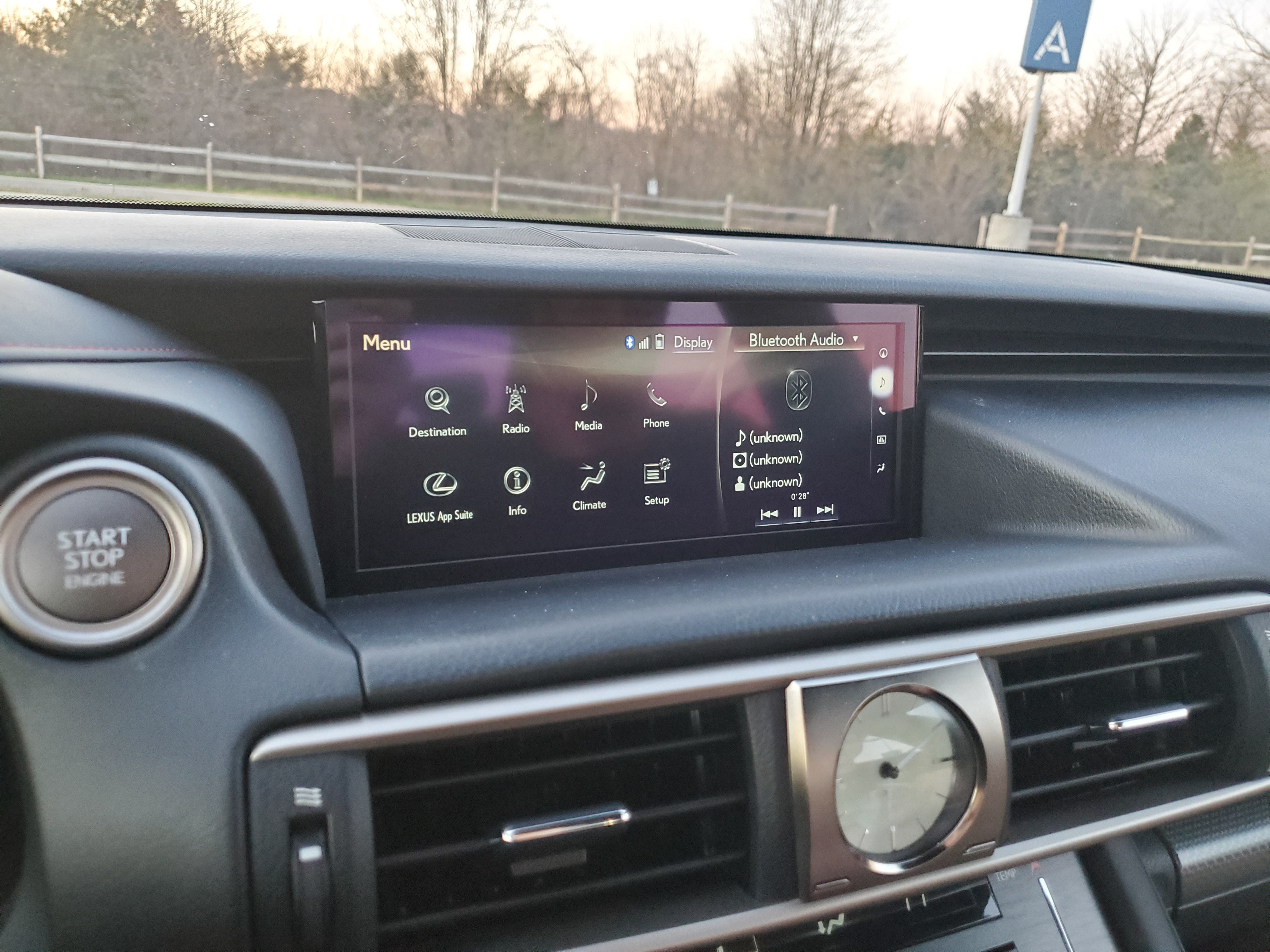
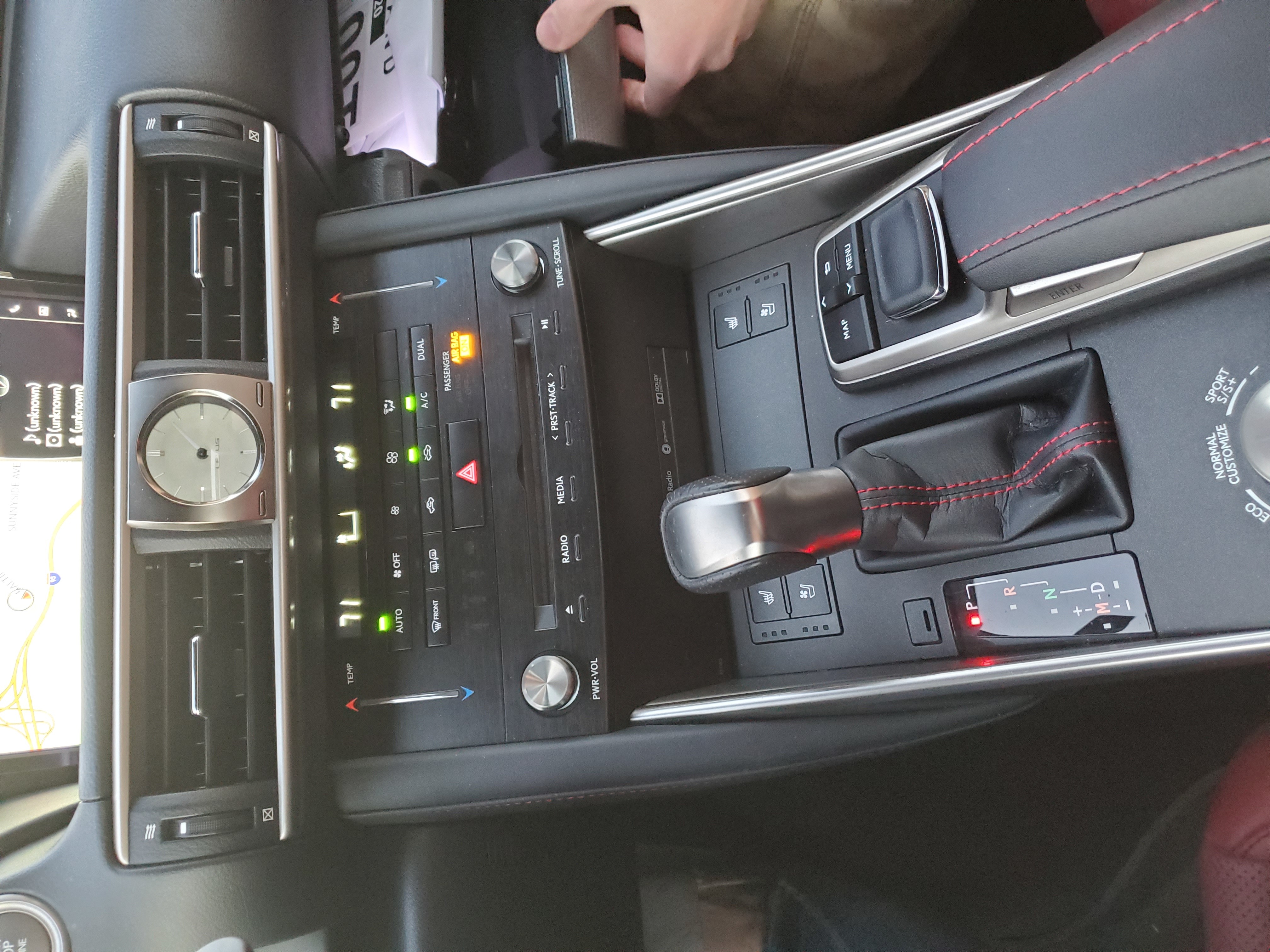
The 2016 Audi A4 Allroad, as I mentioned in my review of it, has a driver's area that truly feels like a cockpit, like a wraparound console that coccoons the driver in electronic displays and textured plastic. It's a good effect, and it does a lot to make the driver feel in control of the road, but that's not the impression that the IS 350, which is similarly priced and broadly comparable in capability, does. In the Lexus IS, the driver certainly feels centered by the car, but not to the exclusion of the outside world. The windows are large and the hood, though long, is sharply slanted, and the driver has excellent visibility of the road ahead, and really can't see the hood much at all. The C pillars, which are increasingly fortresslike in modern cars, aren't too obtrusive, and the rear windows make head-checks for lane changes easy. Road noise isn't extremely isolated, but for an entry-level luxury car, the sound deadening is good enough, and on the softest setting, the suspension isn't too bouncy and LeSabre-like. Instead, the driver feels connected to the road, even in the most comfort-oriented driving mode. It should be mentioned however, that this car has the F Sport package, which, among other changes, includes different suspension tuning and larger wheels. Non-F Sport ISs may well feel softer and less well-connected. Suspension tuning notwithstanding however, the Lexus IS is a car that makes its occupants feel at home, and the dashboard and UI design feels prosocial and interactive, rather than antisocial, reactionary, and driver-focused. The Lexus IS proves that "driver's cars" don't necessarily need to focus and center the driver alone.
That said, what a driver's car it is!
How does it drive?
Any car with sporting pretentions of course lives and dies by the quality of its engine, and fortunately, the IS 350 delivers in spades. It uses a 3.5L V6 unit from Toyota's DOHC GR family. This naturally-aspirated motor produces 311 horsepower and 280 lb-ft of torque, and with a redline just over 6500 RPM, the driver is really encouraged to use them. As with many V6s, torque delivery is smooth and predictable, though at lower RPMs, power is hard to come by. To really put its power down, this engine needs to be revved like a four-cylinder. When that power comes, however, acceleration is considerable, and the IS will pull a quarter mile in about 14 seconds. Accelerating out of corners is a blast, and the all wheel drive system as well as the traction control does a great job of keeping the rear wheels stuck to the pavement, even on damp roads with a heavy foot. Traction control can even be fully disabled, should the driver experience the sudden and complete urge to insert their car into a ditch backwards at high speed. The V6 engine also sounds great when on the throttle, and does a great job of reminding the driver they aren't in an economy car. The engine knows when to be quiet and when not to be, and the IS 350 AWD F Sport feels confident and competent both on the highway and on backroads, and is surely fast enough for most enthusiasts. That said, in 2020, having 311 horsepower with the top trim is starting to feel a little old hat: For example, Audi's V6 S4 makes 369 horsepower with an all wheel drive system. The IS is certainly a fast car, but by the numbers, it's hard to say it's a fast car.
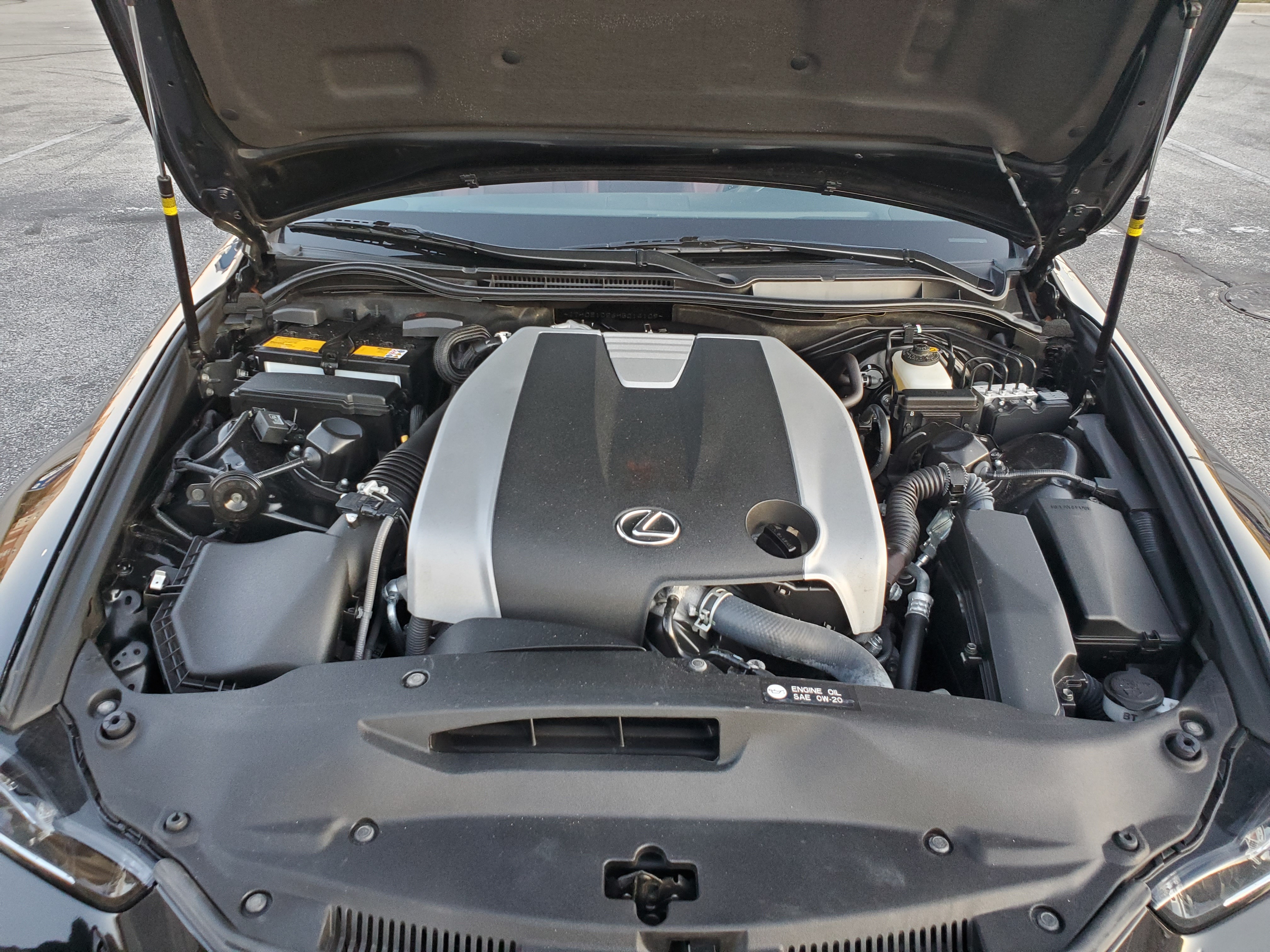
Managing the output of the 3.5L V6 is a six-speed automatic and an all wheel drive system. Having merely six gears also feels a bit old-fashioned now, but the rear wheel drive IS 350 gets an eight-speed. I suspect that the space requirements of the all wheel drive system dictated the use of a smaller transmission. In fact, those space requirements are quite self-evident: There is a huge bulge in the floor in the driver's footwell, one which makes taking one's foot off the pedals (for example, during cruise control) rather difficult, and also making the footwell rather narrow. Despite these drawbacks, however, the transmission and all wheel drive system do their job quite competently. The transmission's programming is good, and it never seems to hunt for gears or hold them unnecessarily. Additionally, shift feel is varied depending on driving style and the drive mode selected by the driver. For normal, relaxed driving, shifts come low in the rev range and happen softly, but with harder driving, or with manual shifting via the manumatic controls, shifts are very fast. The transmission doesn't shift dual clutch-fast, but its shifts are more than fast enough for spirited driving, and there isn't too much input delay for commanded manumatic gear changes. The car thankfully has paddle shifters, and quite large ones at that, though they sit on the wheel and not on the column. FCA's competitor to the IS, the Alfa Romeo Giulia, which sits at a similar price point and level of capability, has even larger paddles that sit on the steering column, so if paddle shifter design makes or breaks a car for you, get the Alfa rather than the Lexus.
As mentioned earlier, the driver is offered several different drive modes to choose from, including normal, "Eco," and two tiers of "Sport" mode as well as a customizable drive mode. These affect suspension damper rates, throttle response, transmission shift policy, and a few other parameters. The Audi A4 Allroad I drove had the same sort of thing, but Audi made drive modes only selectable through a dashboard rocker switch or through the infotainment screen, effectively ruling out the possibility of switching modes on the fly, unless you risk taking your eyes off the road. Lexus included a large and easy to reach dial for selecting drive modes, and to select "Normal" or "Custom," the driver doesn't even have to turn it. Again, Lexus designed critical UI features to be used by touch alone. The gear selector, however, feels a little old-fashioned. The knob itself is nicely sized, but the shifter uses Toyota's venerable side-lockout mechanism for shifting, so putting an IS into gear feels like shifting a 2000s Camry. The shifter does have manumatic shift detents in its path, in addition to the paddles, which is nice, but the throws for shift commands were slightly longer than I would have liked. I agree that many modern shifter designs have their limitations, like the ill-fated FCA shifter involved in the tragic death of Anton Yelchin, or the frankly user-hostile button and dial shifters coming out of many modern cars (Ford, I'm looking at you.) However, the side-lockout automatic shifter just feels anachronistic, and this is another small UI detail that I hope the fourth generation of IS irons out.
The IS features an adjustable-rate damper system, likely of the variable-impedance piston type, mounted on a fully-independent suspension system, with wishbones up front and a multilink system in the rear. Even with the F Sport trim's huge wheels and firmer springs, bumps and cracks in the road surface get absorbed well, while with stiffer damping settings, the car communicates the road surface fairly well. Body roll is of course minimal, and steering feel is tight and somewhat heavy at all speeds. This is a relief from the feather-light power steering of most modern economy cars. Along with the deep and effective seat bolsters, the suspension and steering make the IS addictively fun to throw through corners, and it generally responds sharply and confidently to driver inputs.
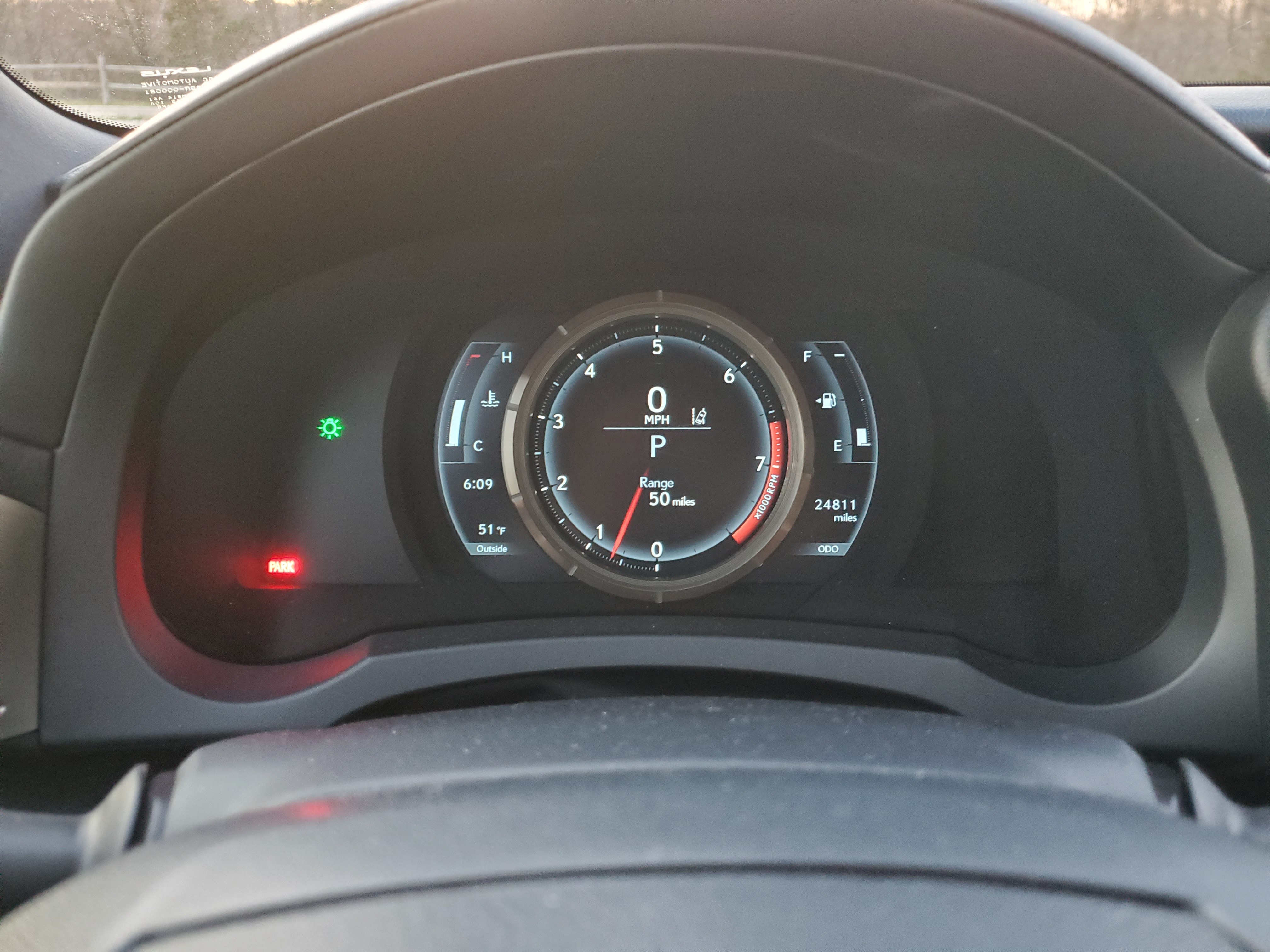
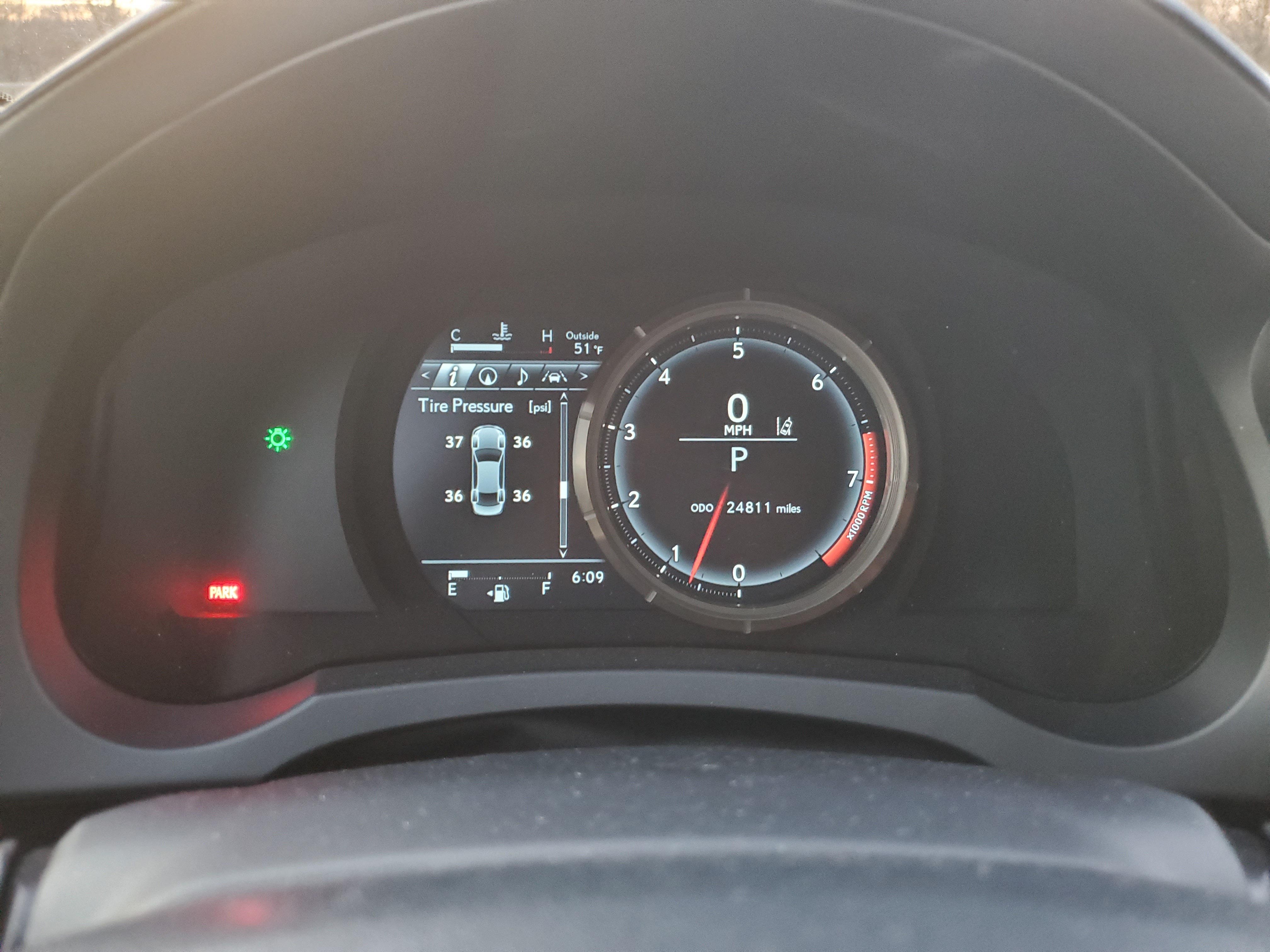
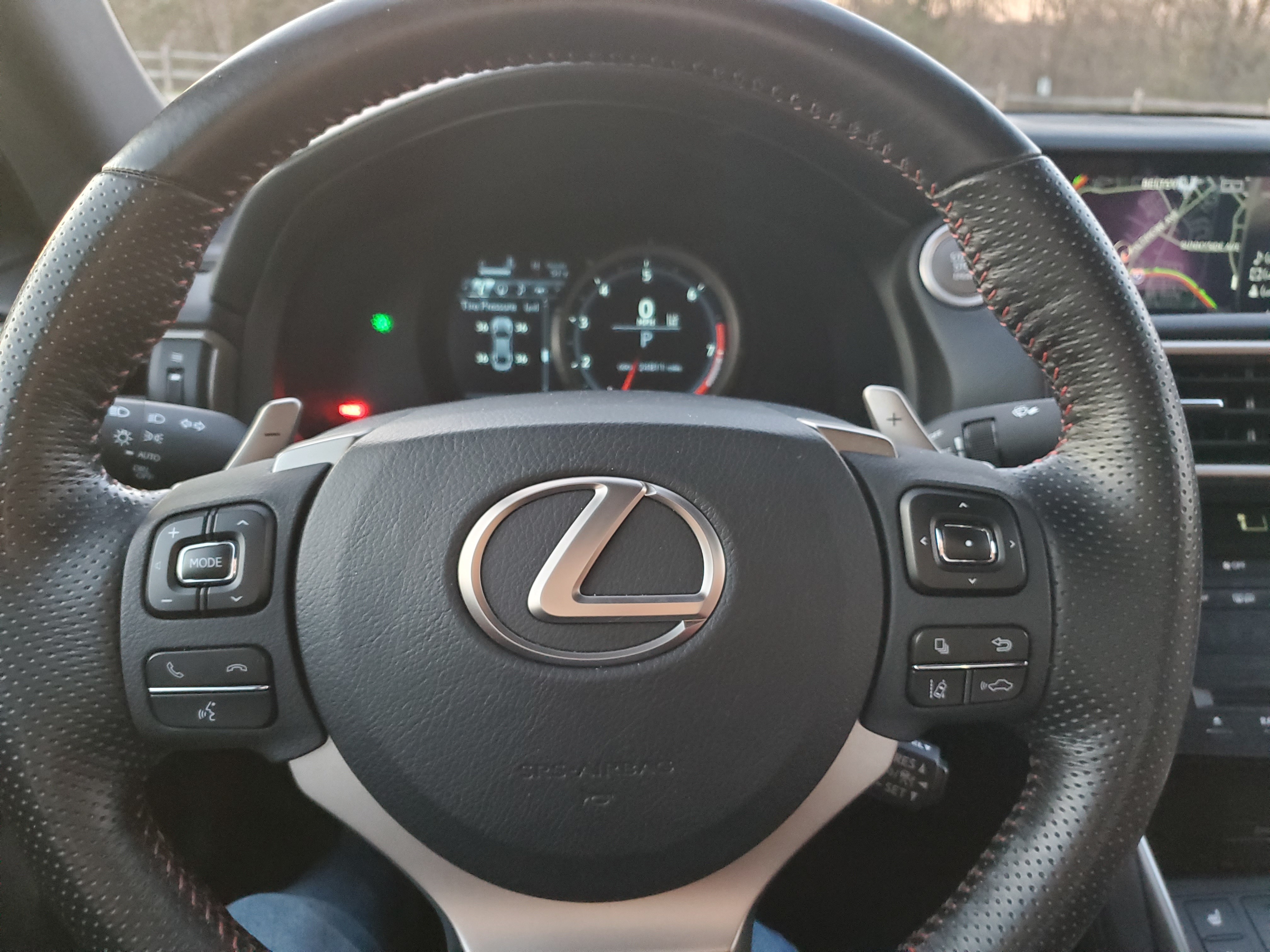
It's pretty easy to find 300 horsepower all wheel drive sedans these days, and a lot of them aren't even specifically luxury oriented. By the numbers, the IS doesn't stand out from the field. The devil is in the details, however: The Lexus IS 350 is not a sporty sedan, it is a sport sedan, and the difference is real. Driving precision is sharp, sharper than tarted-up economy car tier, and handling is fantastically competent in all scenarios. Understeer is difficult to find, and the IS legitimately feels equally comfortable on back roads and on freeways, with no obvious preference for either, unlike many of its counterparts (the V6 AWD Dodge Charger comes to mind.) Lexus pulled out all the stops in terms of the driver user interface, and they've created a user experience that hardly requires the driver to take their eyes off the road or hands off the wheel. Even when one considers that the IS's power isn't mind-blowingly impressive any more, or that a six-speed transmission is a little skimpy for a luxury car these days, the holistic impression remains. Even in the lowest-spec IS, you still get multiple driving modes, a fast-shifting transmission, and remarkable grip and balance, even if you skimped out on the upper-trim paddle shifters, all wheel drive, and variable damping rate suspension. This is a sports sedan, not a sporty sedan.
What does it all mean? Who is this car for?
The reader would be justified to ask themself, having read this far in the review, "So what's the point of all this, if the new Supra exists?" After all, the Supra also has a six-cylinder engine, a rear wheel drive layout, and it even makes more power and torque than the IS's 3.5L V6. Hasn't it beaten the IS at its own game? Or has it? Consider now that the Supra only seats two, and uses a more space-hungry inline six engine, making the hood longer, and yes, there is also the elephant in the room: It's really a BMW Z4. Compare the new Supra to the previous generation; the Supra of the late 1990s was a large, somewhat heavy luxury sports car, with rear seats and plenty of space. That is precisely what the Lexus RC is, Lexus' coupe counterpart to the IS sedan: The RC can get a six-cylinder motor, and it is a sizeable luxury coupe with rear seats. That sounds like a Supra. In fact, it seems eminently likely that Toyota could have made the fifth generation Supra from the Lexus RC, though of course with styling and design tweaks, and maybe some cutbacks on weight and luxury in order to make the RC stand out as the more comfortable option. This would have been a direct stand-in for the previous Supra by design alone. In fact, the fourth-generation Supra shared engineering with the Lexus SC GT coupe! So why collaborate with BMW to make the new Supra an entirely different beast?
Obviously, the first reason is simply pure performance. The RC, for all its virtues, is not necessarily a light car, and designing the Supra to be a two-seat coupe allowed Toyota to make it lighter and somewhat smaller. The second reason, I suspect, is much like the revival of the Ford Bronco and Chevrolet Blazer. There seems to be a larger trend of reviving old nameplates in the automotive industry, a tactic that enables products to appeal to consumers not only on their own merits, but also as symbols of car models gone by. A revived nameplate gives a car the illusion of history, or heritage, and allows an automaker and its products to be seen partly through the lens of nostalgia. So in the case of the Supra, what draw does nostalgia hold? I propose that this draw is twofold: First, there is the appeal of "motorsport heritage," the idea of the celebrated champion of the past coming back for one more shot at glory, where the Supra is venerated as a historical figure, an automotive version of the "great man" theory of historical analysis. Through this lens, the fourth generation Supra left its impact,not as the culmination of a sports coupe arms race through the 1980s and 90s, but as a specific, single winner. Another viewpoint on the new Supra's emotional appeal considers the absolutely massive cultural impact left by The Fast And The Furious. In the early 2000s, sport compact enthusiasts and the tuner culture, particularly import tuners, were finally put in the pop culture spotlight by The Fast And The Furious, and all of a sudden, the hyper-specific aesthetics of style and artistic language of import tuning and customization were made to be cool. Of course, the star of the show in The Fast And The Furious was Brian's (RIP Paul Walker) fourth generation Toyota Supra. Because the Fast and Furious logic is that the cars are characters in their own right, the Supra was as much the lead of the movie as Walker's tortured undercover cop character. But Fast and Furious left its biggest cultural mark nearly 20 years ago now, and the people who were too young for their first car, or were just starting to drive back then, are in their 30s and 40s now. Fourth generation Supras, being both the last of a breed and also a venerated cultural hero and media star, are of course expensive and highly desirable now, but lo and behold! A new Supra is born! And now the Fast And Furious generation has their hero reborn, and financially attainable (ideally.) So perhaps Toyota very specifically wanted the new Supra to not be a direct equivalent to the fourth generation, because they already have that, in the form of the Lexus RC and IS. Instead, the Supra is a symbol, a rehashing not of the design goals, but of the emotional appeal that the old Supra held. The new sports car is a legendary sports car already, simply because it must be.
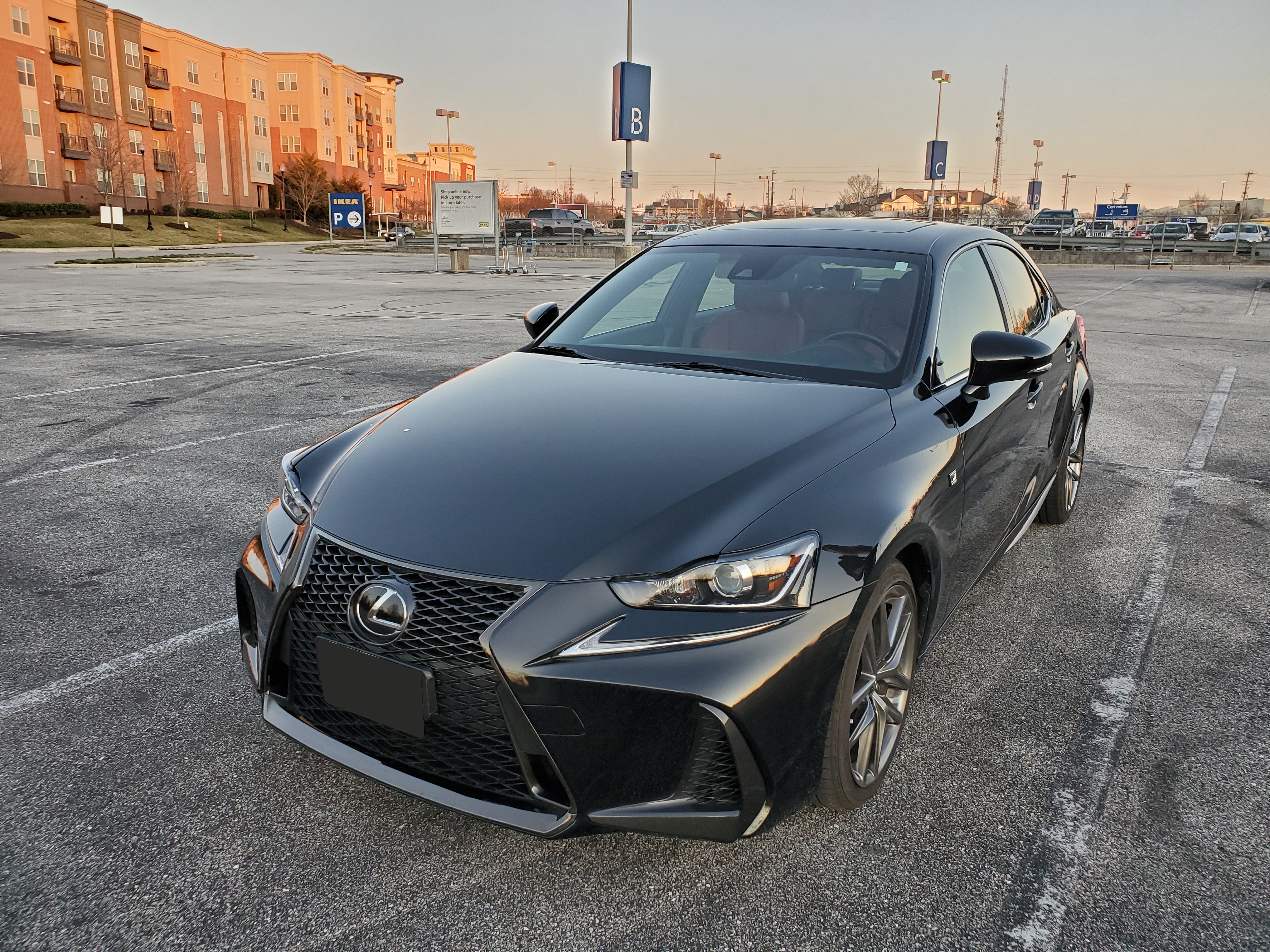
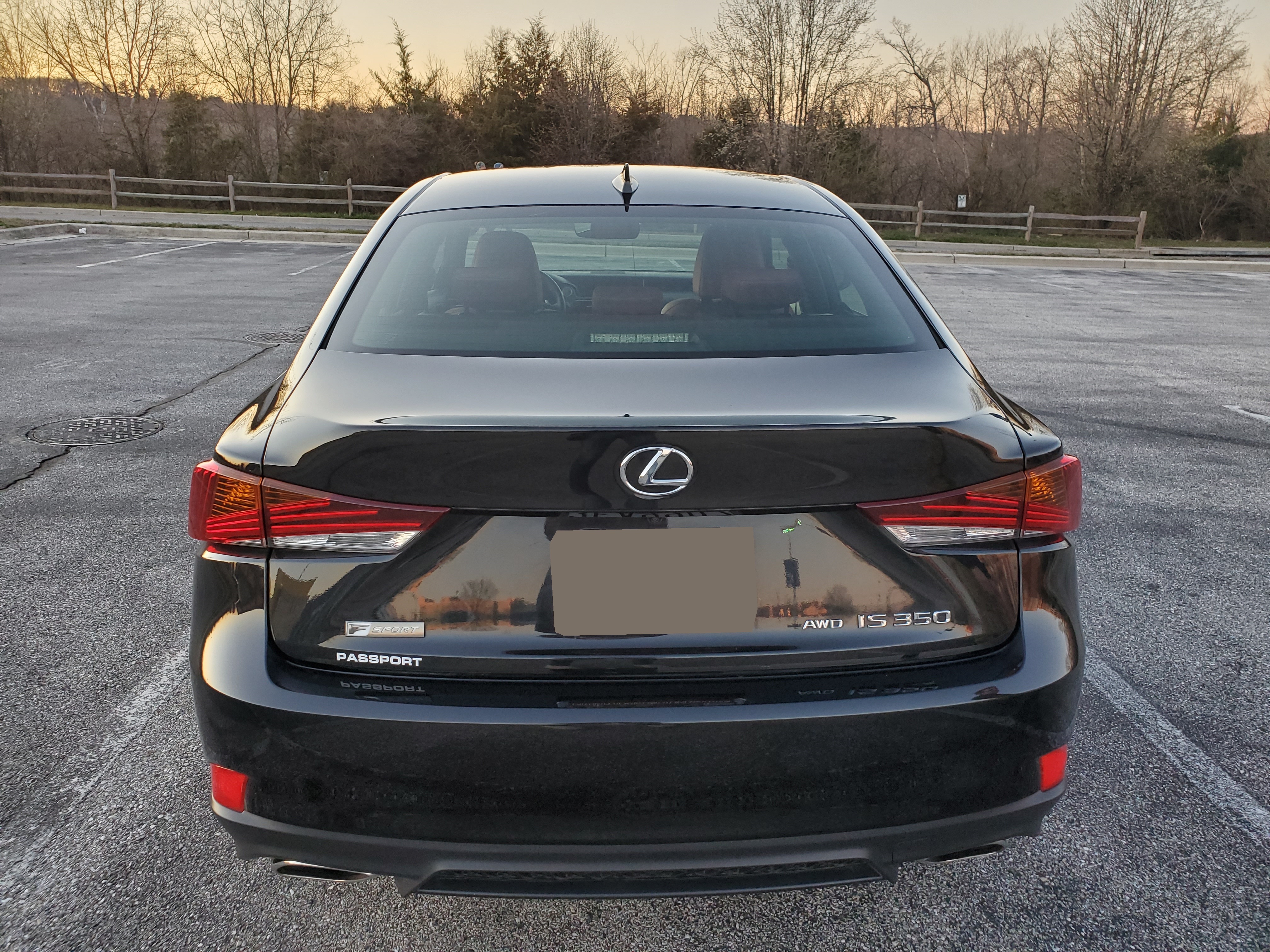
But the Lexus IS is not a Supra. Yes, it is a fast and sporty rear-wheel drive car that seats two in great comfort (and 3 more in cramped comfort), with a potent six cylinder engine and a sophisticated automatic transmission and suspension. But the IS is not a Great Historical Car. It has no great legacy to ride the coattails of. So instead, the IS is a self-defined car, one that exists only in relation to its previous generations, from which it hasn't deviated much, all things considered. But yet, there is also the ever-present spectre of the BMW 3 Series, the "classical sports sedan," against which the IS is unwillingly judged. Perhaps no sports sedan can exist on its own.
I noted with the Buick LeSabre and Audi A4 Allroad that they are designed for very specific relationships between the driver and the outside world. In the case of the LeSabre, that relationship is the result of that car's thesis, that distance is malleable and that going somewhere in a car is not the same thing as driving. For the LeSabre, distance, space, and time have become insignificant in the face of man's technological might. On the other hand, the Allroad has a rather more aggressive outlook. For the Allroad, the world at large, and the road just in front of you, are things to be controlled and conquered, held tight in the technological fist of turbochargers and traction control systems. The Allroad is a car that is, in all respects but physical, an SUV. Like an SUV, it builds its driver experience on the confidence and feeling of control it gives the driver. Both of these cars necessarily impose a philosophical boundary between the driver and the road: In the LeSabre, for the driver to feel the road is an affront to its raison d'etre, while for the Allroad, the driver must be alienated from the road because to fail to do so would mean a failure of the user experience. Both of these were luxury cars in their time, high-value vehicles for the middle and upper class, with impressive performance in their own contexts. This sounds a lot like the Lexus IS, with its outstanding fit-and-finish, its consistently fluid and clever user interface design, and its frankly astounding driving dynamics. Where the IS breaks from this mold is in how it connects the driver to the road. Even in its softest setting, the car does not coddle the driver, or insulate them. In a Lexus IS, the driver is always part of the action. The IS is a "driver's car" because on a fundamental level, it is designed to always be driven. It is insufficient to simply go somewhere in an IS. One must drive. The IS also does not sell the feeling of control that the Allroad does. Where the Allroad implies control over one's destiny, the IS implies control over oneself. The stiff steering, communicative suspension, and fast-responding transmission as well as capable brakes mean the IS is constantly in a dialogue with the driver, with no philosophical distance whatsoever imposed between the driver and the road. Now, admittedly, something like a first generation Mazda Miata or a late 1980s hatchback is a more complete implementation of this philosophy, since those cars are so light and small, but for modern high-value sedans? The IS is the best interpretation of that I have yet seen. To be able to love an IS is to be able to love driving. Not only when you're out on the backroads on a sunny day, but all the time: When you're stuck in traffic, when it's raining, when you just got smoked by some joker in a crappy STi with an e-cigarette. This is a driver's car because it's truly meant to be driven.
Now get out there and drive something.